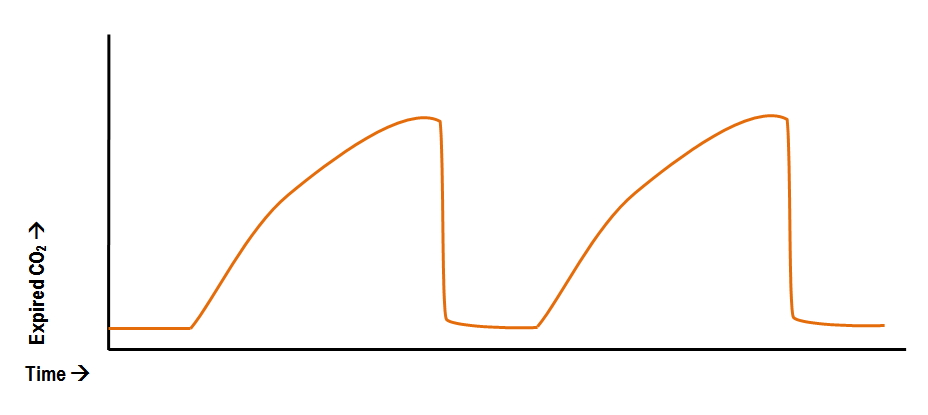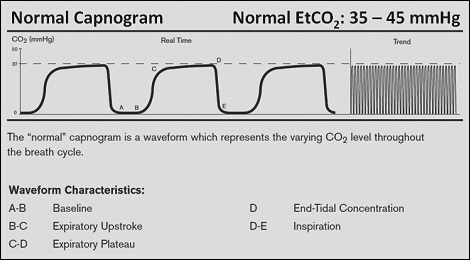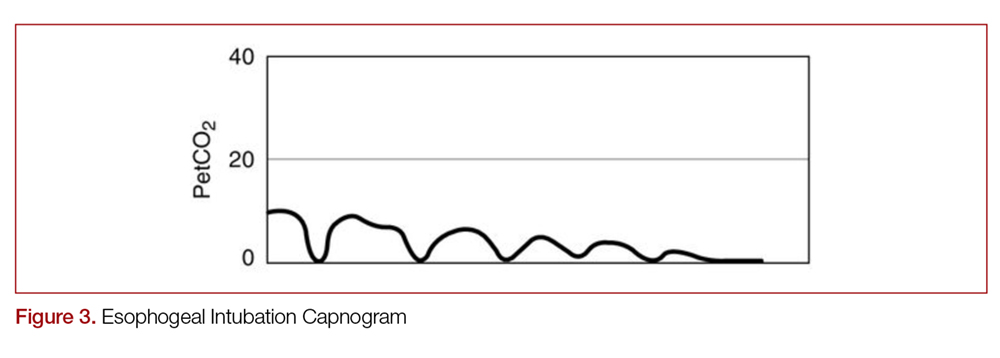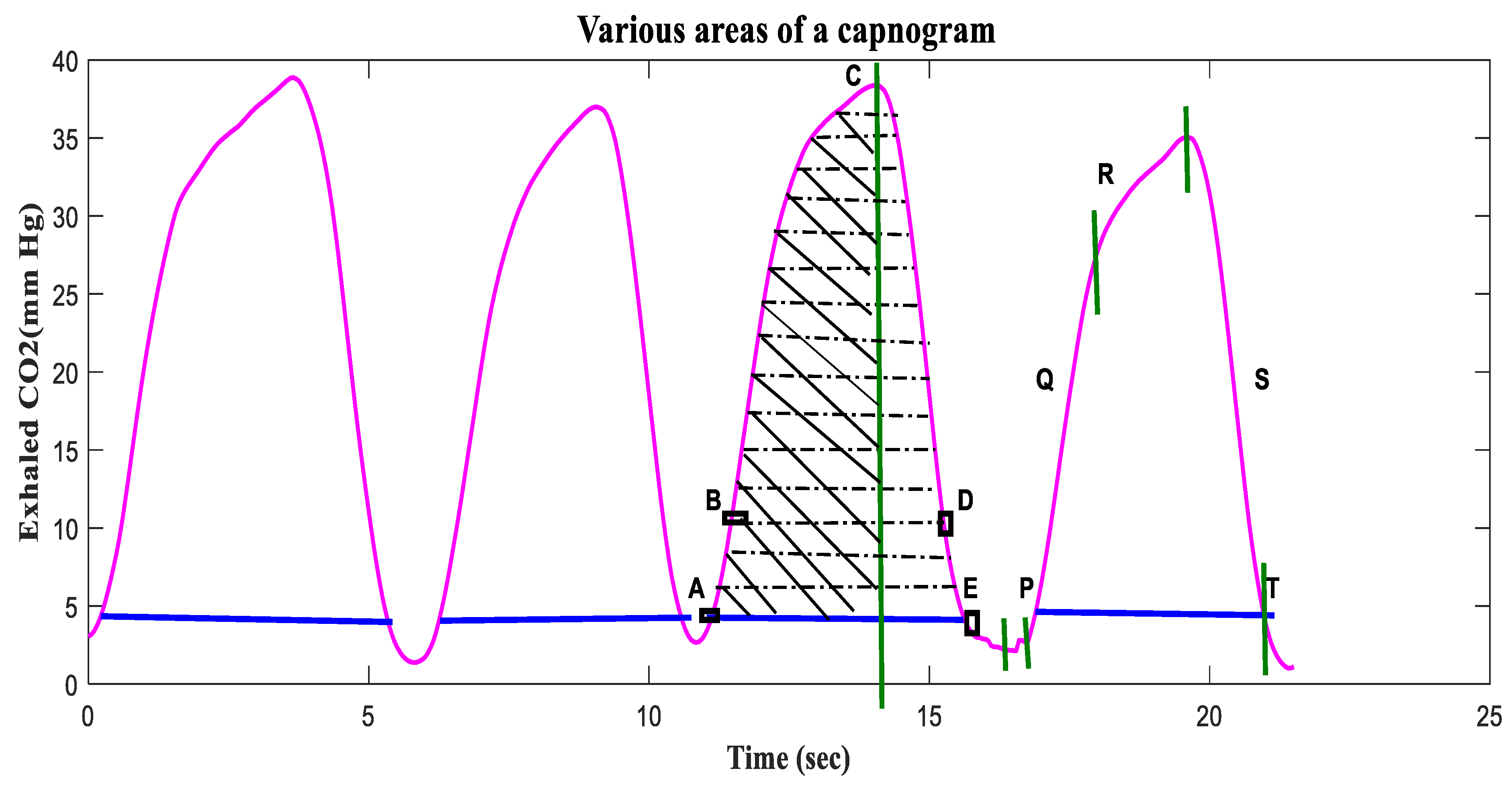normal end tidal co2 uk
The number is called capnometry which is the partial pressure of CO 2 detected at the end of exhalation ranging between 35 - 45 mm Hg or 40 57 kPa. Partial pressure of end-tidal carbon dioxide successful predicts cardiopulmonary resuscitation in the field.
Also called capnometry or capnography this noninvasive technique provides a breath-by-breath analysis and a continuous recording of ventilatory status.

. Normal ETCO2 is in the range of 35 to 45 mmHg. Both end-tidal CO2 monitors and pulse oximetry devices work closely together to help monitor the respiratory status of a patient. End-tidal carbon dioxide monitoring or capnography End-tidal carbon dioxide EtCO 2 monitoring is an attractive method as it is non-invasive portable and relatively inexpensive.
Understanding End Tidal CO 2 Monitoring. Normal PETCO2 Values. Continuous Waveform Capnograpy is written as PETCO2 which stands for patient end-tidal carbon dioxide.
November 11 2012. In normal lungs the end-tidal CO 2 tension is 0508 kPa less than the arterial CO 2 tension and is a useful non-invasive estimate of arterial CO 2. Cross-sectional associations between ETCO2 and PaCO2 were examined in the study.
We aimed to determine the value of sidestream end-tidal carbon dioxide SS-ETCO2 measurement in patients with chronic obstructive pulmonary disease COPD in the emergency department. Normally the end tidal appears as a plateau on the capnograph. A normal trace appears as a series of rectangular waves in sequence with a numeric reading capnometry that shows the value of exhaled CO2.
Kolar M Krizmaric M Klemen P Grmec S. Trauma 2004 showed that end-tidal CO2 may be of value in predicting outcome from major trauma 19. Capnograms in infants and children can have the following format under normal circumstances due to faster respiratory rates smaller tidal volumes and relatively longer response time of capnographs.
The technique has been End-tidal carbon dioxide monitoring in neonates Carbon dioxide monitoring is vital in the management of ventilated newborn babies. For a person with normal lungs the difference between end tidal and Paco2 can vary between 5. On page 49 of the European Paediatric Advanced Life Support manual EPALS 4th edition there is a statement regarding end-tidal carbon dioxide ETCO 2 traces during CPR which states The absence of exhaled CO 2 during CPR does not guarantee tube misplacement.
End-tidal carbon dioxide ETco 2 monitoring provides valuable information about CO 2 production and clearance ventilation. Low end tidal co2 range Wednesday February 23 2022 Edit. Levine RL Wayne MA Miller CC.
End-tidal carbon dioxide monitoring is not as reliable as arterial. If there is a leak in the system however it will look like the diagram here. More recently a large group of medical doctors from several American hospitals tested over 100 patients and wrote an article End-tidal.
You can see that the plateau is not there and the return to the baseline happens rather quickly. A prospective observational study. In hyperventilation the CO2 waveform becomes smaller and more frequent and the numeric reading falls below the normal range.
Because of the leak in the circuit the carbon dioxide is escaping rather than being measured. End-tidal CO2 EtCO2 monitoring is a noninvasive technique which measures the partial pressure or maximal concentration of carbon dioxide CO2 at the end of an exhaled breath which is expressed as a percentage of CO2 or mmHgThe normal values are 5 to 6 CO2 which is equivalent to 35-45 mmHg. Current guidance recommends an end- tidal carbon dioxide ETCO2 of 4045 kPa 300 338 mm Hg to achieve a low- normal arterial partial pressure of CO2 PaCO2 and reduce secondary brain injury.
End tidal Co2 ranges vary slightly from actual PaCo2 and can be affected by many factors depending on the condition of the patients lungs. In hyperventilation the CO2 waveform becomes smaller and more frequent and the numeric reading falls below the normal range. In fact its commonly called the ventilation vital sign.
Although the normal range for CO2 should be between 35-45mmHg CO2 monitoring gives healthcare providers a lot more. Arterial to end-tidal carbon dioxide difference in children undergoing mechanical ventilation of the lungs during general anaesthesia. In a study of 191 blunt trauma patients only 5 of patients with an end-tidal CO2 determination of 325 kPa survived to discharge.
Deakin et al. This prospective cross-sectional study has been carried out over a 3-month. The waveform is called capnograph and shows how much CO 2 is present at each phase of the respiratory.
End-tidal carbon dioxide and outcome of out-of-hospital cardiac arrest. End-tidal CO2 EtCO2 monitoring is a noninvasive technique which measures the partial pressure or maximal concentration of carbon dioxide CO2 at the end of an exhaled breath which is expressed as a percentage of CO2 or mmHgThe normal values are 5 to 6 CO2 which is equivalent to 35-45 mmHg. 35-40 mm Hg.
End-tidal CO2 monitoring is a non-invasive way to monitor a patients carbon dioxide levels. End-tidal CO2 EtCO2 monitoring is a noninvasive technique which measures the partial pressure or maximal concentration of carbon dioxide CO2 at the end of an exhaled breath which is expressed as a percentage of CO2 or mmHgThe normal values are 5 to 6 CO2 which is equivalent to 35-45 mmHg. The difference between nend-tidal and arterial CO 2 is increased if there is mismatch of ventilation and perfusion within the lung as occurs in lung disease.
End-tidal carbon dioxide ETco 2 monitoring provides valuable information about CO 2 production and clearance ventilation. End tidal CO 2 monitoring is represented as a number and a graph on a monitor. The researchers found that end-tidal CO2 could provide a highly sensitive predictor of return of spontaneous circulation during cardiopulmonary resuscitation MPR p791 Cantineau et al 1996.
Whilst this is technically correct particularly in a small child with a leak around a tracheal tube.

Capnography Critical Care Practitioner

End Tidal Carbon Dioxide Concentration E Co2 Mm Hg For The Download Scientific Diagram

Pdf Applications Of Capnography In Airway Management Outside The Operating Room Semantic Scholar
End Tidal Co2 Monitoring In The Pre Hospital Environment More Than Just Endotracheal Tube Placement Confirmation Journal Of Paramedic Practice

Abnormal Capnography Waveforms And Their Interpretation Deranged Physiology

Capnogram R Series Defibrillator Zoll Medical Uk

How To Read And Interpret End Tidal Capnography Waveforms Emsuk Learning

Pdf Applications Of End Tidal Carbon Dioxide Etco2 Monitoring In Emergency Department A Narrative Review Semantic Scholar

Average Etco2 Kpa During Cpr In Patients With Or Without Rosc Download Scientific Diagram

End Tidal Capnography In The Emergency Department Mdedge Emergency Medicine

Life Free Full Text On Analyzing Capnogram As A Novel Method For Screening Covid 19 A Review On Assessment Methods For Covid 19 Html

Average Etco2 Kpa During Cpr In Patients With Or Without Rosc Download Scientific Diagram

How To Read And Interpret End Tidal Capnography Waveforms Emsuk Learning

How To Read And Interpret End Tidal Capnography Waveforms Emsuk Learning

Potential Applications Of Capnography In The Prehospital Setting Journal Of Paramedic Practice
